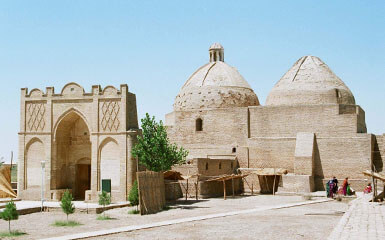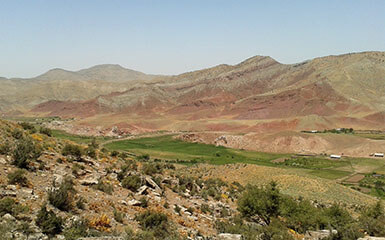Ashgabat
Alem Ferris wheel
State Museum
Fine Arts museum
Wedding Palace
Nisa fortress
Memorial Complex
Ertogrul Gazi Mosque
Neutrality monument
Independence Park
Turkmenbashi Ruhy Mosque
Olympic Village
Ylham Alley
Carpet Museum
Monument of Lenin
Ahal Region
Abivert
Altyn Depe
Annau
Darvaza
Geokdepe
Kowata
Mane baba
Zengi baba
Nedir Shah
Nokhur
Parzdepe
Sarahs baba
Seyit Jemaleddin mosque
Shahrislam
Ulug depe
Mary region
40 cupolas
Akcha Kala
Ancient Merv
Badkhyz
Chilburj
Gebeklytepe
Geok Gumbaz
Gurtly Depe
Kharoba Koshuk
Talkhatan Baba
Yekedeshik
Dashoguz region
Ashyk Aydyn Pir
Devkeshen
Ismamit ata
Kalaly-gyr
Kaplankyr Nature Reserve
Kunya-Urgench
Damla
Balkan region
Dehistan
Yangikala
Awaza
Gozli ata
Kemal ata
Mashat ata
Paraw bibi
Lunar Mountains
Shevlan Baba
Igdy kala
An exciting travel around the Jurassic period is provided for tourists in Lebap Velayat, located in the east of Turkmenistan (total area of 94000 kilometres2). The Koytendag Mountains and the famous Plateau of the Dinosaurs, known all over the world, are the most striking attractions in the region. The reptiles left their footprints here about 150 million years ago. Over 2500 tracks were found. These findings became a world sensation, because that was the world’s largest dinosaur footprint concentration.
The underground corridors, the countless columns of stalactites and stalagmites in the Karlyuk Caves enrapture visitors. The subterranean system of passages, halls and galleries reaches over 50 kilometres and enters the top 10 largest caves in the world.
The Daray Dere gorge captivates with its unusual harsh beauty. Its extent is impressive: 28 kilometres long, up to 350 meters tall, surpassing the Grand Canyon in the US.
The Karlyuk marble onyx deposit has no analogues in terms of its colours and beauty of natural resources and attracts travellers. Waterfalls in the Umbar Dere gorge are amazing and fabulous. Turkmenistan’s highest summit, Ayry Baba (3137.7 m) and the deepest lake, Kette Kol (59 m) are located in Lebap Velayat. According to the stories of the elders, the most ancient mulberry tree grows in the Hojagaravul gorge. It is 1000-year-old and, as stated by a legend, the soldiers of Genghis Khan had a rest under the tree. 12-15 people can easily fit in the hollow of an 800-year-old plane tree growing in the Koytendag Mountains.
The famous Kyrk Gyz (from Turkmen ‘40 girls’) gorge resembles a slightly raised trough. About 3000 people can shelter from extreme weather in this miracle gorge.
The underground lake in the Koytendag Mountains is home to a unique, endemic fish, the Koytendag blind loach. The fish is named so because it does not have eyes.
The region's history is rich. A part of the Great Silk Road, passing through the territory of Turkmenistan, began in Lebap Velayat. The first settlement on the banks of the ancient Oxus River (present-day the Amu Darya River) – Amul appeared about 2100-2000 years ago. Its ruins are still located on the southern suburbs of Turkmenabat. The settlement turned into a city in the early Middle Ages (3rd-7th centuries). Amul became an important transit hub in Central Asia in the 9th-10th centuries. The caravan routes extended from Amul in three directions: northward – to Horezm, southward – to Zemm (present-day Kerki) and westward – to Merv.
A unique monument of medieval architecture and the only well-preserved caravanserai in Turkmenistan is known as Dayahatyn. It was located on the trade route from Amul to Horezm along the Amu Darya River. It is a typical architectural monument of the 11th-12th centuries. The Muntasir Mausoleum, constructed over the grave of the last Samanid ruler in medieval Zemm, enchants visitors. People call it the Mausoleum of Alamberdar, who, according to a legend, was the commander of the Caliph Ali. This building is one of the best examples of the Central Asian architecture in the 11th century. The Mausoleum of Astana Baba, also located in Kerki Etrap, has a completely original composition.


